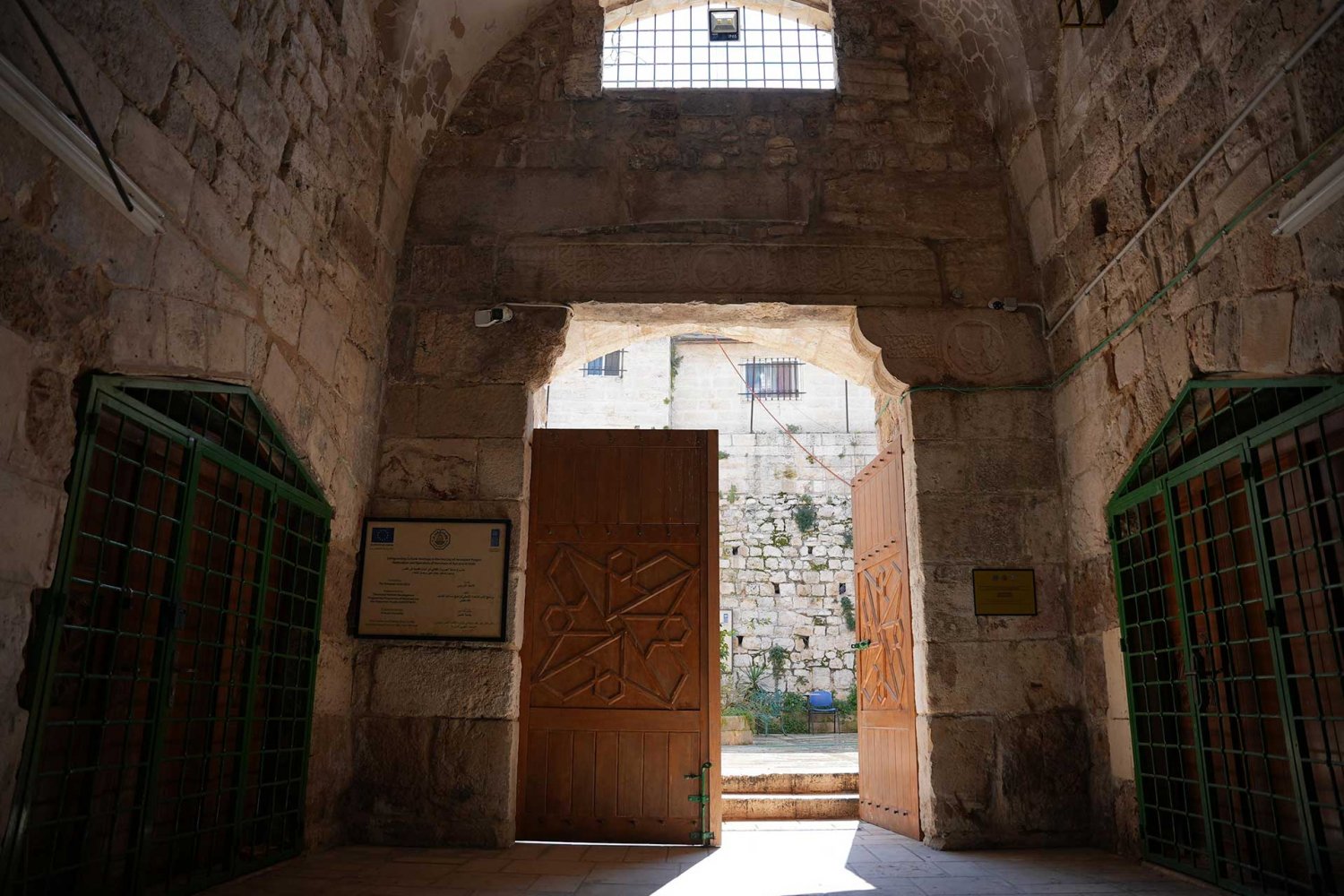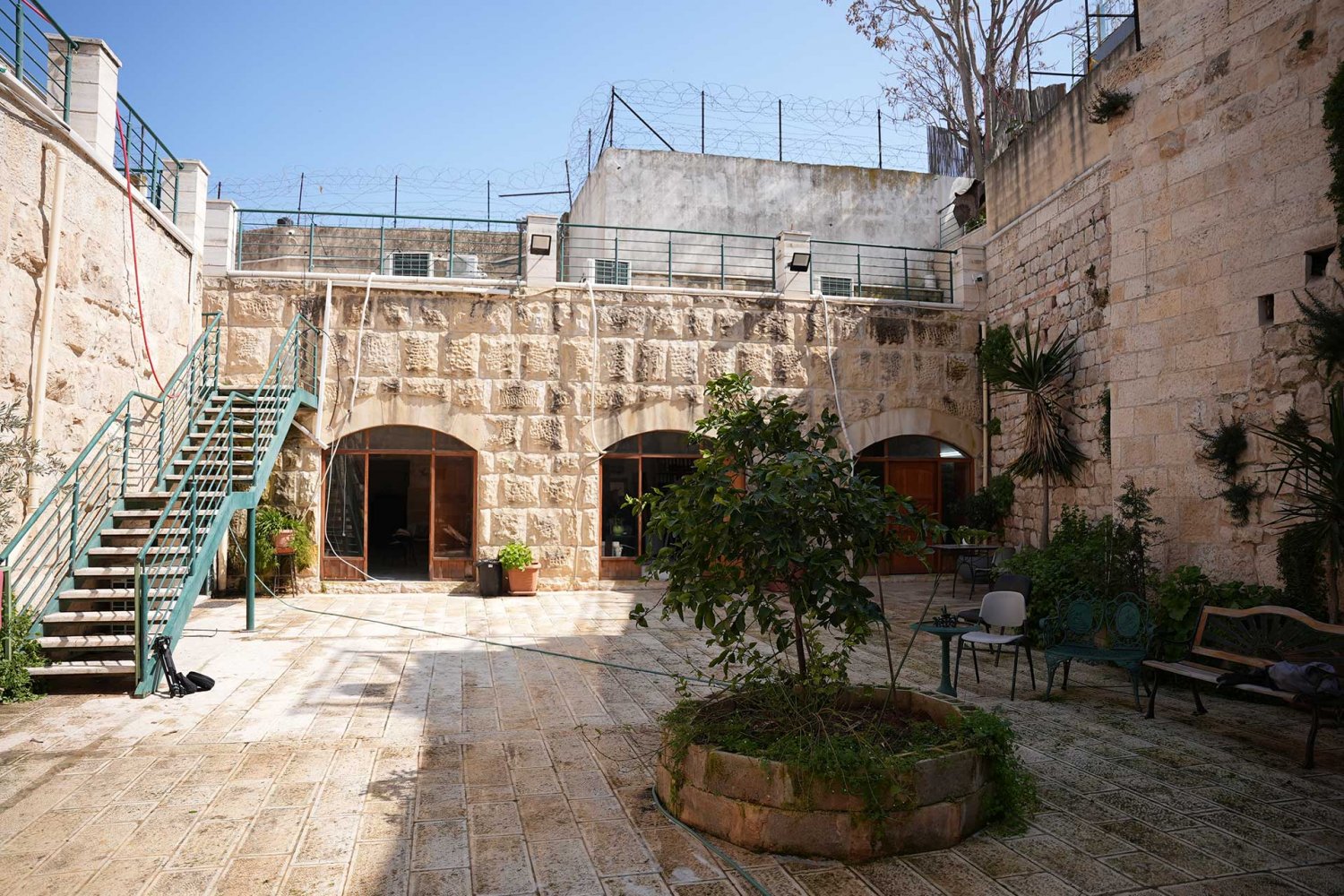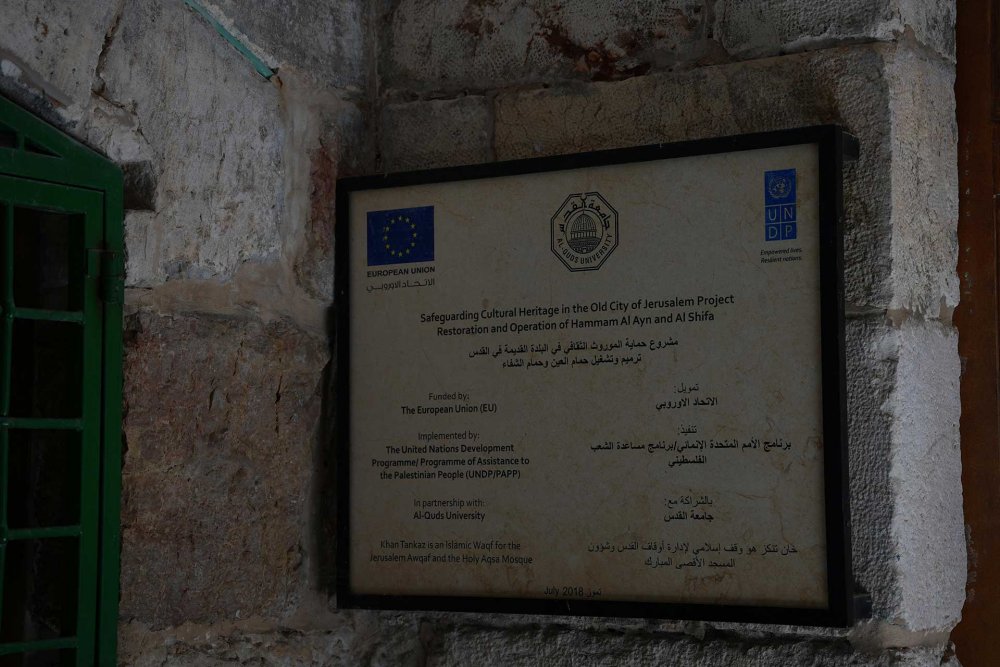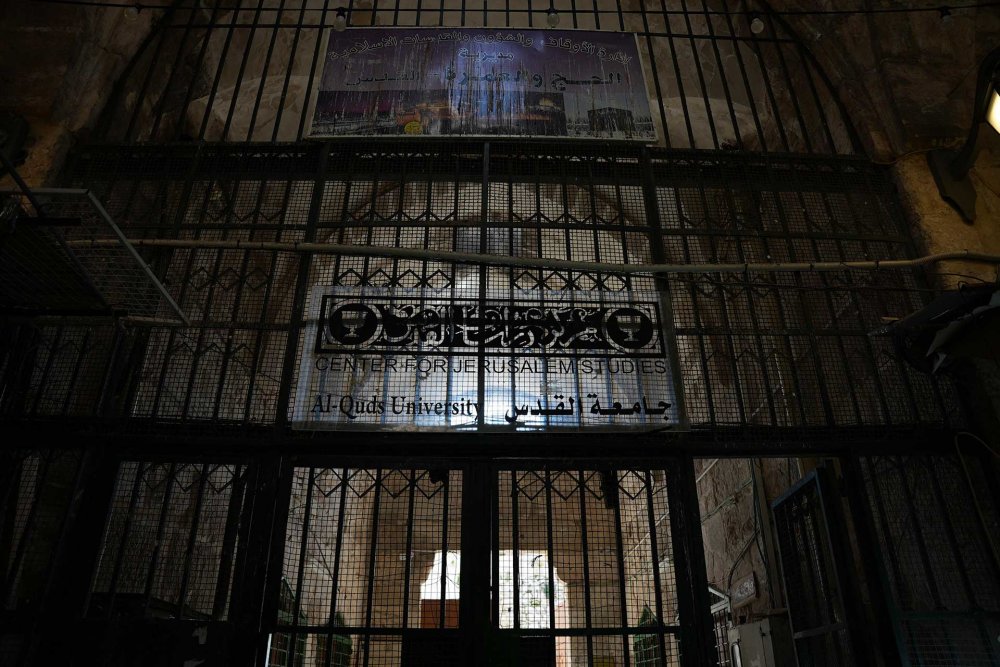“We are up against an intellectual alliance and a large void that prompted the launch of the Jerusalem studies center. Our aim is to bridge a gap concerning Jerusalem’s history and heritage, particularly in terms of narrative and associated concepts,” al-Natsheh said.
“While we confront major problems, Jerusalem remains a city of heritage with distinct Arab and Islamic characteristics, despite enduring 56 years of Judaization,” he added.
Al-Natsheh, however, was keen to point out that the establishment of the center was not only aimed at responding to and commenting on the Israeli narrative, but rather delving into thorough research and analysis that offers a fresh academic perspective on Jerusalem.
Moreover, the president of Al-Quds University, Dr. Imad Abu Kishk, highlighted the university’s master’s program in Jerusalem studies as a response to the dominant narrative that increasingly favors the Israeli perspective due to Israel’s extensive research presence.4
“We were concerned that the Palestinian narrative would be overshadowed with the Arab and Islamic worlds citing Israeli research in the future, along with potentially misleading narratives. Therefore, we launched a master’s program featuring research and scholarly dissertations that offer an alternative perspective with a focus on Jerusalem and the preservation of its authentic narrative,” Abu Kishk said.
Securing a research budget is one of the primary challenges for Palestinian academic institutions, exacerbated by insufficient scholarships amid the high cost of living. Al-Quds University offers a substantial 40 percent discount on tuition fees for students in this specific program, along with efforts to secure 30 percent of the tuition through grants, which leaves the remaining 30 percent for students to pay.5
“The attack on the university and the Israeli refusal to recognize certain majors solely because its campus is in Jerusalem [within Israeli-defined municipal boundaries] casts a shadow over the center. Under normal circumstances, enrollment in the departments would have exceeded 35 students per batch,” Al-Natsheh said.
Despite the hurdles and resource constraints, the center has published several research papers and master’s theses authored by its graduates that have earned academic acclaim. One thesis, “The Moroccan Rab‘a [Quran] Preserved within the al-Aqsa Mosque,” was presented by researcher Samar Bkirat, an expert in heritage, restoration, and preservation of manuscripts. Bkirat participated in the restoration of the “Moroccan Rab‘a,” a Quranic manuscript that was written in 1344 by the Sultan of Morocco, Abu al-Hasan ‘Ali ibn ‘Uthman ibn Ya‘qub ibn ‘Abd al-Haqq al-Marini, and donated to the al-Aqsa Mosque. Till today, it remains among the collections in the Islamic Museum at the al-Aqsa Mosque.
Adly Nasser al-Din, a student in the master’s program, is currently completing his thesis on the development of lighting in al-Aqsa Mosque before the introduction of electricity. He previously obtained a bachelor’s degree in electrical engineering.
Nasser al-Din shared with Jerusalem Story his analysis of ancient texts, particularly travel memoirs, to uncover how the first qibla was illuminated before electricity was invented. He discovered a significant disparity in the accounts of lantern usage within the mosque’s covered prayer halls.6
“Several travelers claimed that the northern prayer hall was lit with 5,000 lanterns, while others suggested it was 2,000. Yet another account exceeded these numbers, stating there were 25,000 lanterns lighting up the space,” Nasser al-Din relayed.
“This substantial variation in figures led me to pursue a master’s thesis on this topic, and I am currently engaged in the research, investigation, and collection of further information,” he added.
Nasser al-Din also observed a correlation between the quantity of lanterns used to illuminate the mosque in the past and the strength of the ruling Islamic state and consequently, the influence of its endowments. He also noted a consistent disparity in the number of lanterns used to illuminate the outer courtyards of al-Aqsa Mosque compared to those inside the prayer halls, where worshippers gathered to read the Quran and which were greater in number.
Further, the Jerusalem studies program offers students the opportunity to study law. Professor of Law Munir Nuseibah told Jerusalem Story that under his guidance, students delve into the field of international law with a focus on the status of Jerusalem as an occupied city. The curriculum involves a thorough examination of numerous United Nations resolutions pertaining to Jerusalem and other relevant measures on the international stage.7




